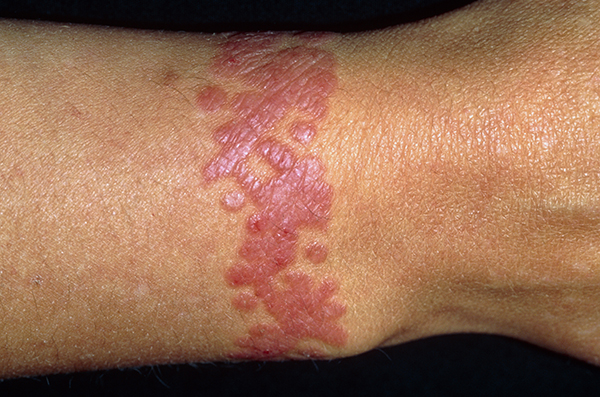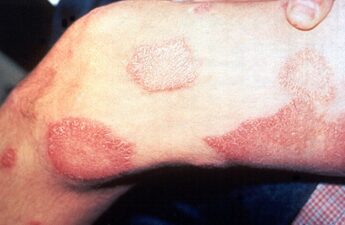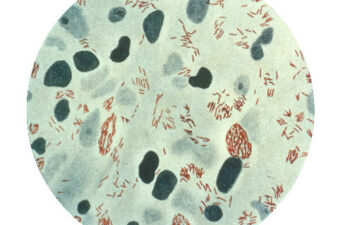
From the US Food and Drug Administration
Tattoos are more popular than ever. According to a 2015 Harris Poll, about 3 in 10 (or 29%) people surveyed have at least one tattoo. The U.S. Food and Drug Administration (FDA) is also seeing reports of people developing infections from contaminated tattoo inks, as well as adverse reactions to the inks themselves.
Over the years, the FDA has received hundreds of adverse event reports involving tattoos: 363 from 2004-2016.
Before you get a tattoo, consider these key questions, answered by Dr. Linda Katz, M.D., M.P.H., director of FDA’s Office of Cosmetics and Colors.
1. Should I be concerned about unsafe practices, or the tattoo ink itself?
Both. While you can get serious infections from unhygienic practices and equipment that isn’t sterile, infections can also result from ink that was contaminated with bacteria or mold. Using non-sterile water to dilute the pigments (ingredients that add color) is a common culprit, although not the only one.
There’s no sure-fire way to tell if the ink is safe. An ink can be contaminated even if the container is sealed or the label says the product is sterile.
2. What is in tattoo ink?
Published research has reported that some inks contain pigments used in printer toner or in car paint. FDA has not approved any pigments for injection into the skin for cosmetic purposes.
FDA reviews reports of adverse reactions or infections from consumers and healthcare providers. We may learn about outbreaks from the state authorities who oversee tattoo parlors.
3. What kinds of reactions may happen after getting a tattoo?
You might notice a rash—redness or bumps—in the area of your tattoo, and you could develop a fever.
More aggressive infections may cause high fever, shaking, chills, and sweats. Treating such infections might require a variety of antibiotics—possibly for months—or even hospitalization and/or surgery. A rash may also mean you’re having an allergic reaction. And because the inks are permanent, the reaction may persist.
This is an example of an allergic reaction to a tattoo.
Contact your health care professional if you have any concerns.
4. Can scar tissue build up after getting a tattoo?
Scar tissue may form when you get a tattoo, or you could develop “granulomas,” small knots or bumps that may form around material that the body perceives as foreign. If you tend to get keloids—scars that grow beyond normal boundaries—you may develop the same kind of reaction to the tattoo.
5. What do I need to know about MRIs if I get a tattoo?
Some people may have swelling or burning in the tattoo when they have magnetic resonance imaging (MRI), although this happens rarely and does not last long. Let your health care professional know that you have a tattoo before an MRI is ordered.
6. What about do-it-yourself tattoo inks and kits?
Inks and kits sold as “do-it-yourself” to consumers have been associated with infections and allergic reactions. FDA is also concerned that consumers may not know how to control and avoid all sources of contamination.
7. Could other problems occur later on?
Although research is ongoing at FDA and elsewhere, there are still a lot of questions about the long-term effects of the pigments, other ingredients, and possible contaminants in tattoo inks. FDA has received reports of bad reactions to tattoo inks right after tattooing and even years later. You also might become allergic to other products, such as hair dyes, if your tattoo contains p-phenylenediamene (PPD).
Then there’s tattoo removal. We don’t know the short- or long-term consequences of how pigments break down after laser treatment. However, we do know some tattoo removal procedures may leave permanent scarring.
8. If I get a tattoo and develop an infection or other reaction, what should I do?
First, contact your health care professional.
Second, notify the tattoo artist so he or she can identify the ink and avoid using it again. Ask for the brand, color, and any lot or batch number of the ink or diluent to help determine the source of the problem and how to treat it.
Third, whether you’re a consumer, tattoo artist, or health care professional, tell FDA. Provide as much detail as possible about the ink and your reaction and outcome. Reports from consumers are one of our most important sources of safety information.
Removing Tattoos May Be Harder Than You Think
So think before you ink. Consider the risks.
Remember, too, that removing a tattoo is a painstaking process, and complete removal without scarring may be impossible.
If you do decide to get a tattoo, make sure the tattoo parlor and artist comply with state and local laws. The National Conference of State Legislatures has a Web page on state requirements for tattooing![]() . For information on local regulations, contact your county or city health department.
. For information on local regulations, contact your county or city health department.
Updated: May 2, 2017


